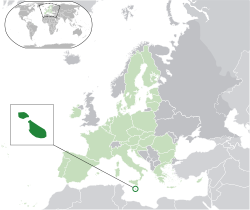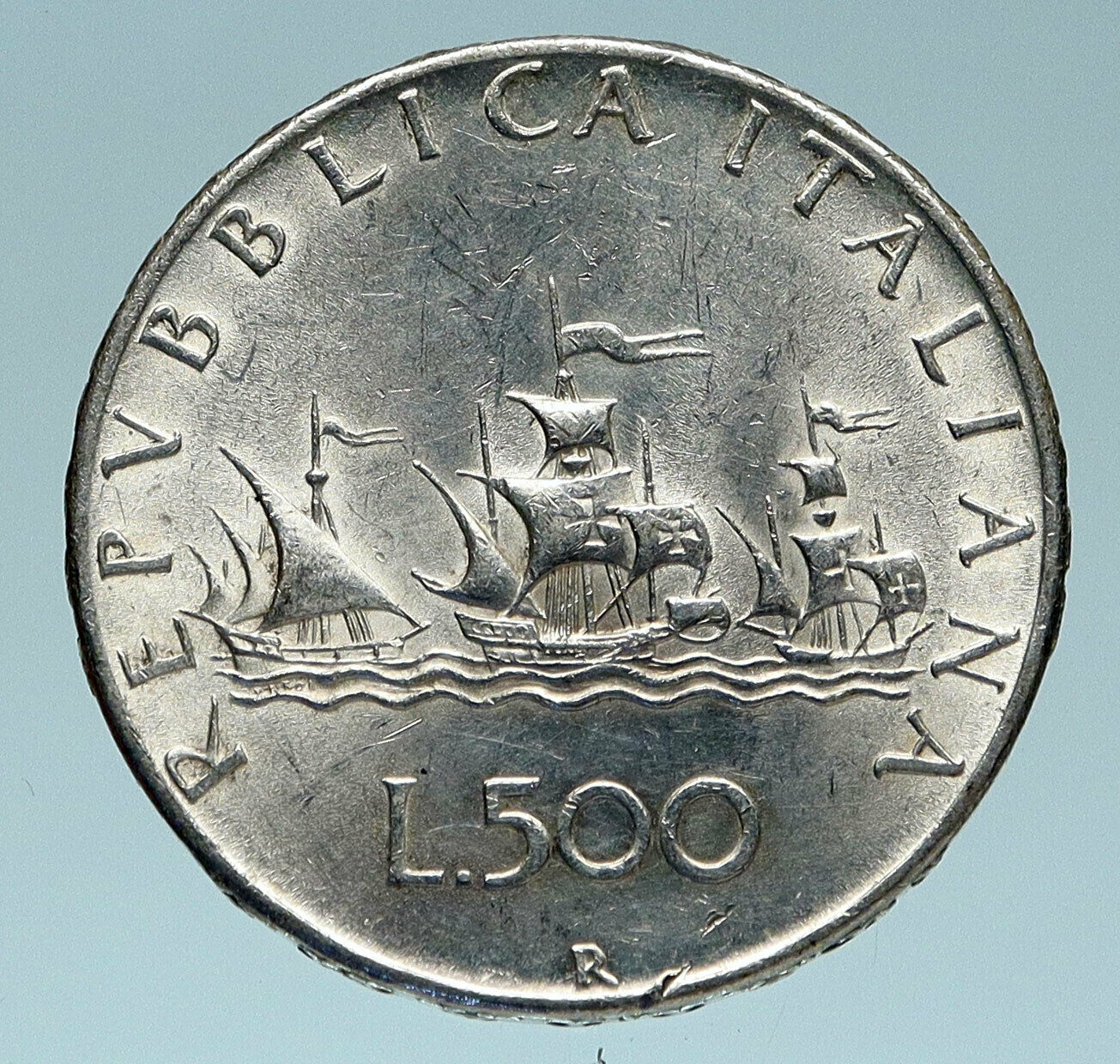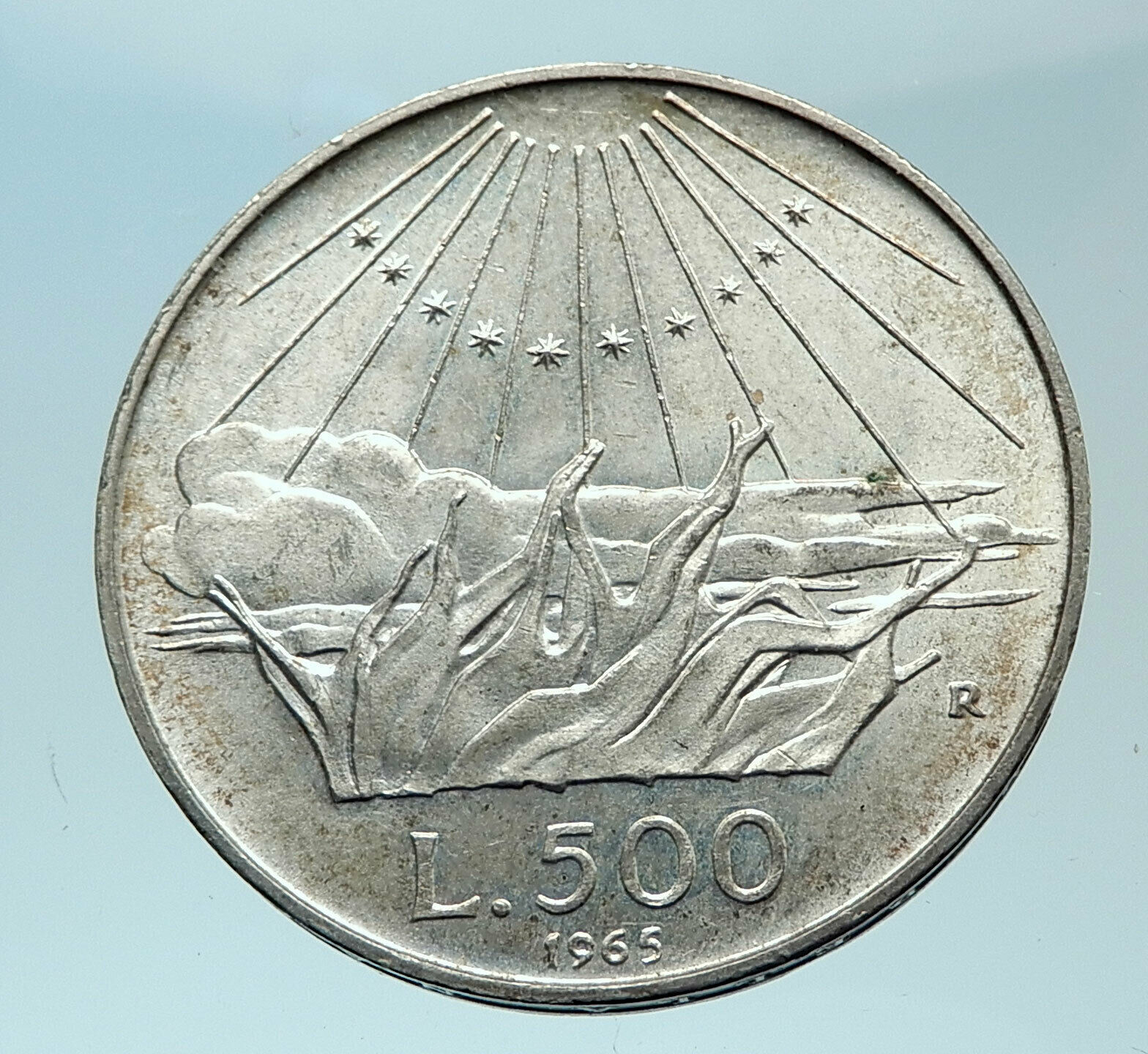|
Malta
Windmill on Malta
1977 Proof Silver 5 Lira (Pounds) 39mm (28.28 grams) 0.925 Silver (0.841 oz ASW)
Reference: KM# 47
Certification: NGC PF 68 ULTRA CAMEO 2863588-014
REPUBBLIKA · TA’ · MALTA *, Republic of Malta emblem.
Lm5 1977, Windmill of Xarolla.
You are bidding on the exact item pictured, provided with a Certificate of Authenticity and Lifetime Guarantee of Authenticity.
 The Xarolla Windmill at Żurrieq, Malta is one of the windmills constructed by the Order of St. John in the villages and towns of Malta. It was built in the 18th-century and is presently one of the most preserved windmills in Malta. The windmill is an agri-tourism attraction and is found in a complex of agricultural buildings such as a farmhouse, a chapel, catacombs and others. The windmill is also used as an art studio. The Xarolla Windmill at Żurrieq, Malta is one of the windmills constructed by the Order of St. John in the villages and towns of Malta. It was built in the 18th-century and is presently one of the most preserved windmills in Malta. The windmill is an agri-tourism attraction and is found in a complex of agricultural buildings such as a farmhouse, a chapel, catacombs and others. The windmill is also used as an art studio.
In 1674 Grand Master Nicolas Cotoner built five windmills around Malta, one of which was tax-Xarolla. Tax-Xarolla Windmill was built by Grand Master Antonio Manoel de Vilhena in 1724. Sometimes after 1998, this was restored to its original working order. It is now the only functioning windmill on the islands of Malta. This is a valuable witness of local culture and heritage; it still has parts of the original mechanisms and can still grain the wheat. In the year 2000, this building was passed over to be administered by the Żurrieq Local Council and is intended to serve also as a cultural centre.
 Malta, officially known as the Republic of Malta (Maltese: Repubblika ta’ Malta), is a Southern European island country consisting of an archipelago in the Mediterranean Sea. It lies 80 km (50 mi) south of Italy, 284 km (176 mi) east of Tunisia, and 333 km (207 mi) north of Libya. With a population of about 475,000 over an area of 316 km2 (122 sq mi), Malta is the world’s tenth smallest and fifth most densely-populated country. Its capital is Valletta, which is the smallest national capital in the European Union by area at 0.8 km.2 The official languages are Maltese and English, with Maltese officially recognised as the national language and the only Semitic language in the European Union. Malta, officially known as the Republic of Malta (Maltese: Repubblika ta’ Malta), is a Southern European island country consisting of an archipelago in the Mediterranean Sea. It lies 80 km (50 mi) south of Italy, 284 km (176 mi) east of Tunisia, and 333 km (207 mi) north of Libya. With a population of about 475,000 over an area of 316 km2 (122 sq mi), Malta is the world’s tenth smallest and fifth most densely-populated country. Its capital is Valletta, which is the smallest national capital in the European Union by area at 0.8 km.2 The official languages are Maltese and English, with Maltese officially recognised as the national language and the only Semitic language in the European Union.
 Malta has been inhabited since approximately 5900 BC. Its location in the centre of the Mediterranean has historically given it great strategic importance as a naval base, with a succession of powers having contested and ruled the islands, including the Phoenicians, Carthaginians, Romans, Greeks, Byzantines, Arabs, Normans, Sicilians, Spanish, Knights of St. John, French, and British. Most of these foreign influences have left some sort of mark on the country’s ancient culture. Malta has been inhabited since approximately 5900 BC. Its location in the centre of the Mediterranean has historically given it great strategic importance as a naval base, with a succession of powers having contested and ruled the islands, including the Phoenicians, Carthaginians, Romans, Greeks, Byzantines, Arabs, Normans, Sicilians, Spanish, Knights of St. John, French, and British. Most of these foreign influences have left some sort of mark on the country’s ancient culture.
 Malta became a British colony in 1815, serving as a way station for ships and the headquarters for the British Mediterranean Fleet. It played an important role in the Allied war effort during the Second World War, and was subsequently awarded the George Cross for its bravery in the face of an Axis siege, and the George Cross appears on Malta’s national flag. The British Parliament passed the Malta Independence Act in 1964, giving Malta independence from the United Kingdom as the State of Malta, with Queen Elizabeth II as its head of state and queen. The country became a republic in 1974. It has been a member state of the Commonwealth of Nations and the United Nations since independence, and joined the European Union in 2004; it became part of the eurozone monetary union in 2008. Malta became a British colony in 1815, serving as a way station for ships and the headquarters for the British Mediterranean Fleet. It played an important role in the Allied war effort during the Second World War, and was subsequently awarded the George Cross for its bravery in the face of an Axis siege, and the George Cross appears on Malta’s national flag. The British Parliament passed the Malta Independence Act in 1964, giving Malta independence from the United Kingdom as the State of Malta, with Queen Elizabeth II as its head of state and queen. The country became a republic in 1974. It has been a member state of the Commonwealth of Nations and the United Nations since independence, and joined the European Union in 2004; it became part of the eurozone monetary union in 2008.
Malta has a long Christian legacy and its Archdiocese is claimed to be an apostolic see because Paul the Apostle was shipwrecked on “Melita”, according to Acts of the Apostles, which is now widely taken to be Malta. While Catholicism is the official religion in Malta, Article 40 of the Constitution states that “all persons in Malta shall have full freedom of conscience and enjoy the free exercise of their respective mode of religious worship.”
Malta is a popular tourist destination with its warm climate, numerous recreational areas, and architectural and historical monuments, including three UNESCO World Heritage Sites: Hypogeum of Ħal-Saflieni, Valletta, and seven megalithic temples which are some of the oldest free-standing structures in the world.
|









 The Xarolla Windmill at Żurrieq, Malta is one of the windmills constructed by the Order of St. John in the villages and towns of Malta. It was built in the 18th-century and is presently one of the most preserved windmills in Malta. The windmill is an agri-tourism attraction and is found in a complex of agricultural buildings such as a farmhouse, a chapel, catacombs and others. The windmill is also used as an art studio.
The Xarolla Windmill at Żurrieq, Malta is one of the windmills constructed by the Order of St. John in the villages and towns of Malta. It was built in the 18th-century and is presently one of the most preserved windmills in Malta. The windmill is an agri-tourism attraction and is found in a complex of agricultural buildings such as a farmhouse, a chapel, catacombs and others. The windmill is also used as an art studio. Malta, officially known as the Republic of Malta (Maltese: Repubblika ta’ Malta), is a Southern European island country consisting of an archipelago in the Mediterranean Sea. It lies 80 km (50 mi) south of Italy, 284 km (176 mi) east of Tunisia, and 333 km (207 mi) north of Libya. With a population of about 475,000 over an area of 316 km2 (122 sq mi), Malta is the world’s tenth smallest and fifth most densely-populated country. Its capital is Valletta, which is the smallest national capital in the European Union by area at 0.8 km.2 The official languages are Maltese and English, with Maltese officially recognised as the national language and the only Semitic language in the European Union.
Malta, officially known as the Republic of Malta (Maltese: Repubblika ta’ Malta), is a Southern European island country consisting of an archipelago in the Mediterranean Sea. It lies 80 km (50 mi) south of Italy, 284 km (176 mi) east of Tunisia, and 333 km (207 mi) north of Libya. With a population of about 475,000 over an area of 316 km2 (122 sq mi), Malta is the world’s tenth smallest and fifth most densely-populated country. Its capital is Valletta, which is the smallest national capital in the European Union by area at 0.8 km.2 The official languages are Maltese and English, with Maltese officially recognised as the national language and the only Semitic language in the European Union.  Malta has been inhabited since approximately 5900 BC. Its location in the centre of the Mediterranean has historically given it great strategic importance as a naval base, with a succession of powers having contested and ruled the islands, including the Phoenicians, Carthaginians, Romans, Greeks, Byzantines, Arabs, Normans, Sicilians, Spanish, Knights of St. John, French, and British. Most of these foreign influences have left some sort of mark on the country’s ancient culture.
Malta has been inhabited since approximately 5900 BC. Its location in the centre of the Mediterranean has historically given it great strategic importance as a naval base, with a succession of powers having contested and ruled the islands, including the Phoenicians, Carthaginians, Romans, Greeks, Byzantines, Arabs, Normans, Sicilians, Spanish, Knights of St. John, French, and British. Most of these foreign influences have left some sort of mark on the country’s ancient culture.  Malta became a British colony in 1815, serving as a way station for ships and the headquarters for the British Mediterranean Fleet. It played an important role in the Allied war effort during the Second World War, and was subsequently awarded the George Cross for its bravery in the face of an Axis siege, and the George Cross appears on Malta’s national flag. The British Parliament passed the Malta Independence Act in 1964, giving Malta independence from the United Kingdom as the State of Malta, with Queen Elizabeth II as its head of state and queen. The country became a republic in 1974. It has been a member state of the Commonwealth of Nations and the United Nations since independence, and joined the European Union in 2004; it became part of the eurozone monetary union in 2008.
Malta became a British colony in 1815, serving as a way station for ships and the headquarters for the British Mediterranean Fleet. It played an important role in the Allied war effort during the Second World War, and was subsequently awarded the George Cross for its bravery in the face of an Axis siege, and the George Cross appears on Malta’s national flag. The British Parliament passed the Malta Independence Act in 1964, giving Malta independence from the United Kingdom as the State of Malta, with Queen Elizabeth II as its head of state and queen. The country became a republic in 1974. It has been a member state of the Commonwealth of Nations and the United Nations since independence, and joined the European Union in 2004; it became part of the eurozone monetary union in 2008. 




